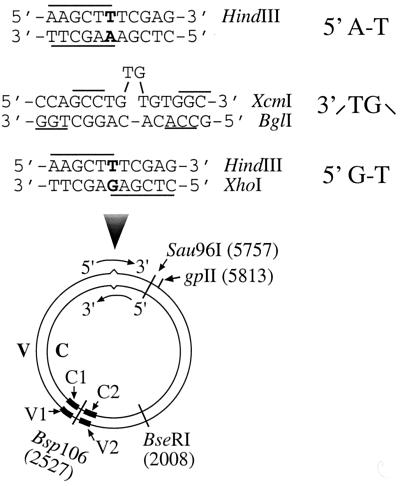FIG. 1.
DNA substrates. The heteroduplexes were constructed from f1MR phage series (see Materials and Methods) to contain (i) a G-T mismatch and a strand break (at the Sau96I site) in the complementary strand 125 bp 5′ to the mismatch (5′ G-T) or (ii) a TG dinucleotide insertion-deletion mismatch with a strand break 181 bp 3′ to the mispair (3′ /TG\ substrate). The mismatches were within overlapping recognition sites for two restriction endonucleases so that the DNA is resistant to hydrolysis by both enzymes. Preferential repair on the nicked strand renders the repair products sensitive to HindIII (in the case of the 5′ G-T substrate) or BglI (in the case of the 3′ /TG\ substrate). A homoduplex (5′ A-T) was also constructed in a manner identical to the construction of the 5′ G-T substrate. V and C, viral strand and cDNA strand, respectively. C1, C2, V1, and V2 represent oligonucleotide probes (solid bars) complementary to the Bsp106-flanking sequences in the complementary (C1 and C2) and viral (V1 and V2) strands.

